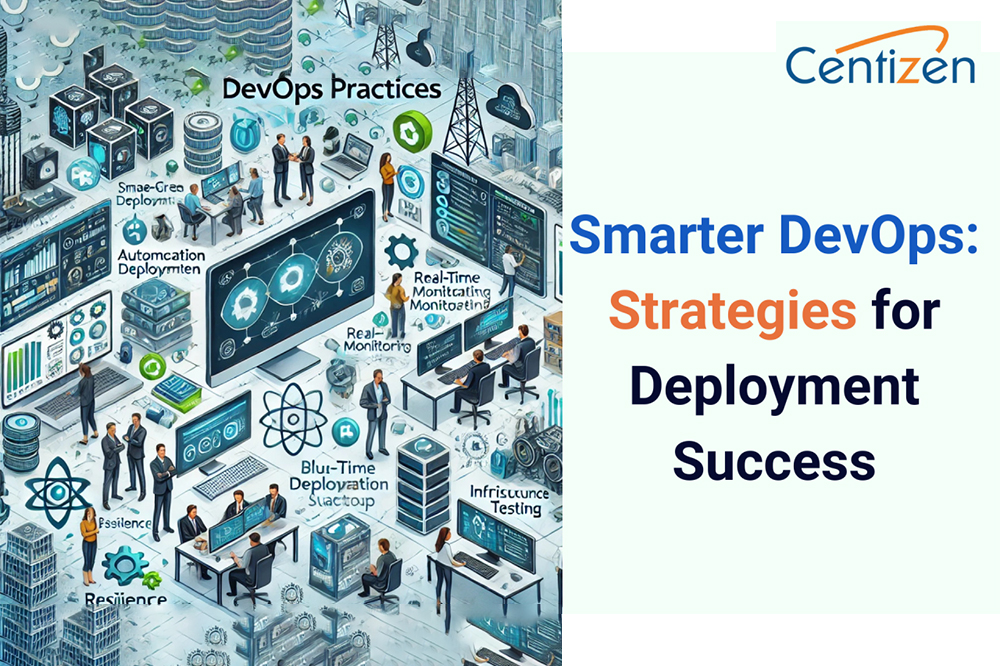Smarter DevOps: Strategies for Deployment Success

Deployments are often regarded as the final frontier in software development—the moment when all the hard work comes to life. However, without proper processes in place, they can quickly spiral into what feels like a horror movie: unexpected failures, performance issues, and scrambling to fix bugs in real-time.
As businesses scale and systems grow more complex, these challenges become even more pronounced. Here are key strategies to ensure your deployments are smooth, predictable, and free from surprises:
1. Prioritize automation
- Manual processes are prone to human error.
- Automate testing, builds, and deployments for consistency and reliability.
- Use tools like Jenkins, GitLab CI/CD, and Azure DevOps.
- Automating tests at every stage (unit, integration, and end-to-end) creates a safety net.
2. Embrace canary deployments and blue-green strategies
- Avoid rolling out updates to your entire production environment at once.
- Canary deployments: Release updates to a small subset of users first and monitor closely.
- Blue-green deployments: Maintain two environments (active and inactive) for seamless traffic switching during updates.
- Detect issues in a controlled environment before full deployment.
3. Monitor in real-time
- Monitoring is a continuous process, even after deployment.
- Use tools like Prometheus, Grafana, or Datadog to track application health.
- Set up alerts for anomalies (e.g., error rates, CPU usage spikes) to respond proactively.
- Real-time monitoring allows you to address problems before they impact users.
4. Adopt infrastructure as code (IaC)
- Use IaC tools like Terraform, Ansible, and AWS CloudFormation to manage infrastructure with code.
- Ensure consistency across environments.
- Create production-like environments for testing to reduce surprises during deployment.
- Treating infrastructure as code makes deployments repeatable, auditable, and version-controlled.
5. Foster a culture of collaboration
- Encourage cross-functional communication between developers, operations, and QA teams.
- Break down silos and promote shared ownership.
- Conduct regular retrospectives and blameless post-mortems to improve processes.
- Collaboration empowers teams to identify and address potential deployment pitfalls early.
6. Test for chaos
- Simulate scenarios like database crashes or server outages using tools like Chaos Monkey.
- Uncover weaknesses in your system before real-world incidents occur.
- Chaos engineering ensures system resilience and prepares teams for unexpected events.
7. Start small, scale fast
- Begin with small, manageable changes for every deployment.
- Smaller updates make it easier to identify issues and recover quickly.
- Incremental progress reduces complexity and minimizes risks.
Final thoughts
Deployments don’t have to be the stuff of nightmares. By adopting smarter DevOps practices, you can minimize risks, streamline processes, and deliver seamless experiences to your end users.
The key is preparation, automation, and continuous improvement. As your organization grows, these strategies will serve as a foundation for scalable, reliable software delivery—freeing your team to focus on innovation rather than firefighting.
Explore Centizen Inc’s comprehensive staffing solutions, custom software development and innovative software offerings, including ZenBasket and Zenyo, to elevate your business operations and growth.
Our Services
Products
Contact Us
USA: +1 (971) 420-1700
Canada: +1 (971) 420-1700
India: +91 63807-80156
Email: contact@centizen.com
Centizen
A Leading IT Staffing, Custom Software and SaaS Product Development company founded in 2003. We offer a wide range of scalable, innovative IT Staffing and Software Development Solutions.
Contact Us
USA: +1 (971) 420-1700
Canada: +1 (971) 420-1700
India: +91 63807-80156
Email: contact@centizen.com






